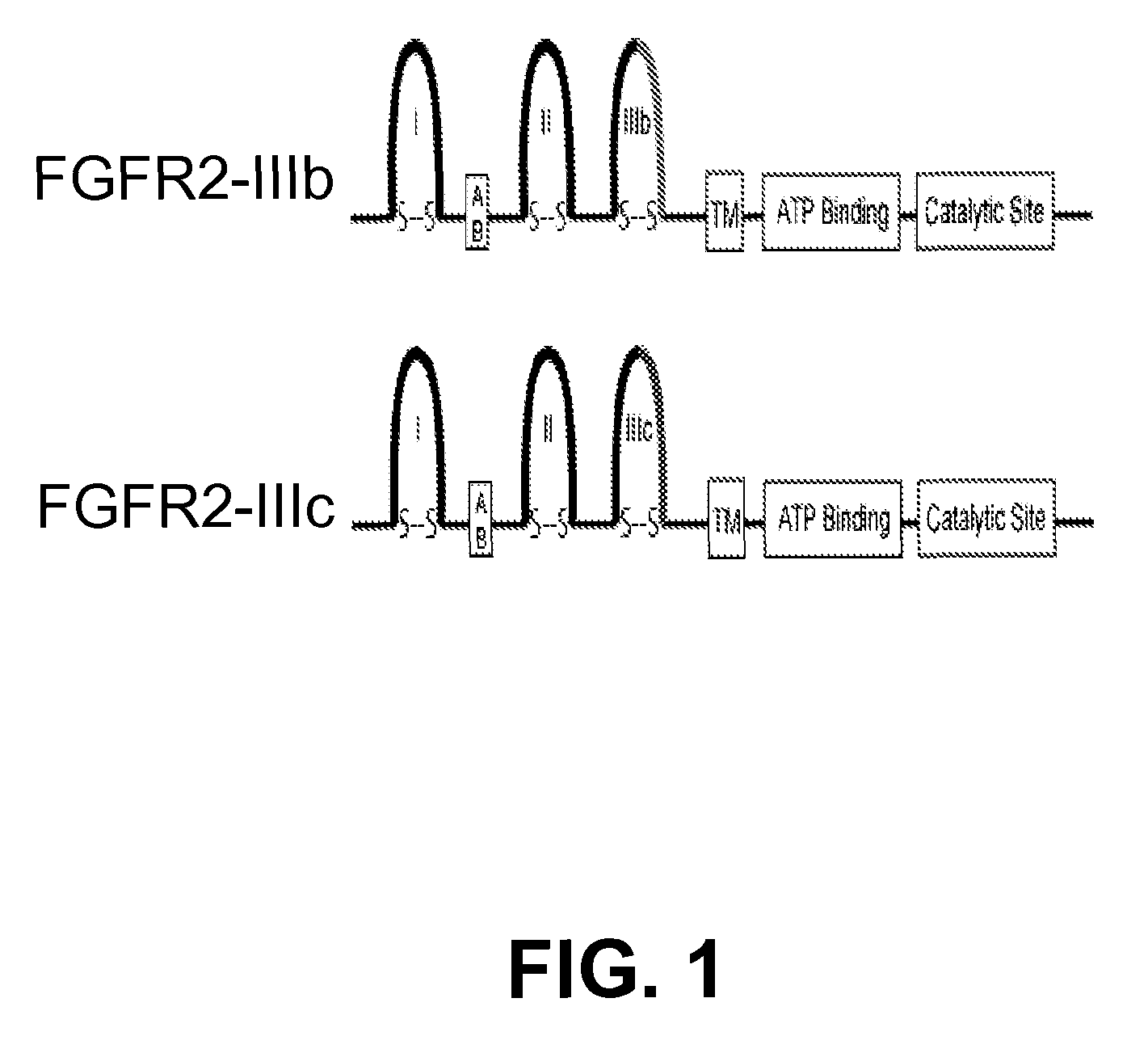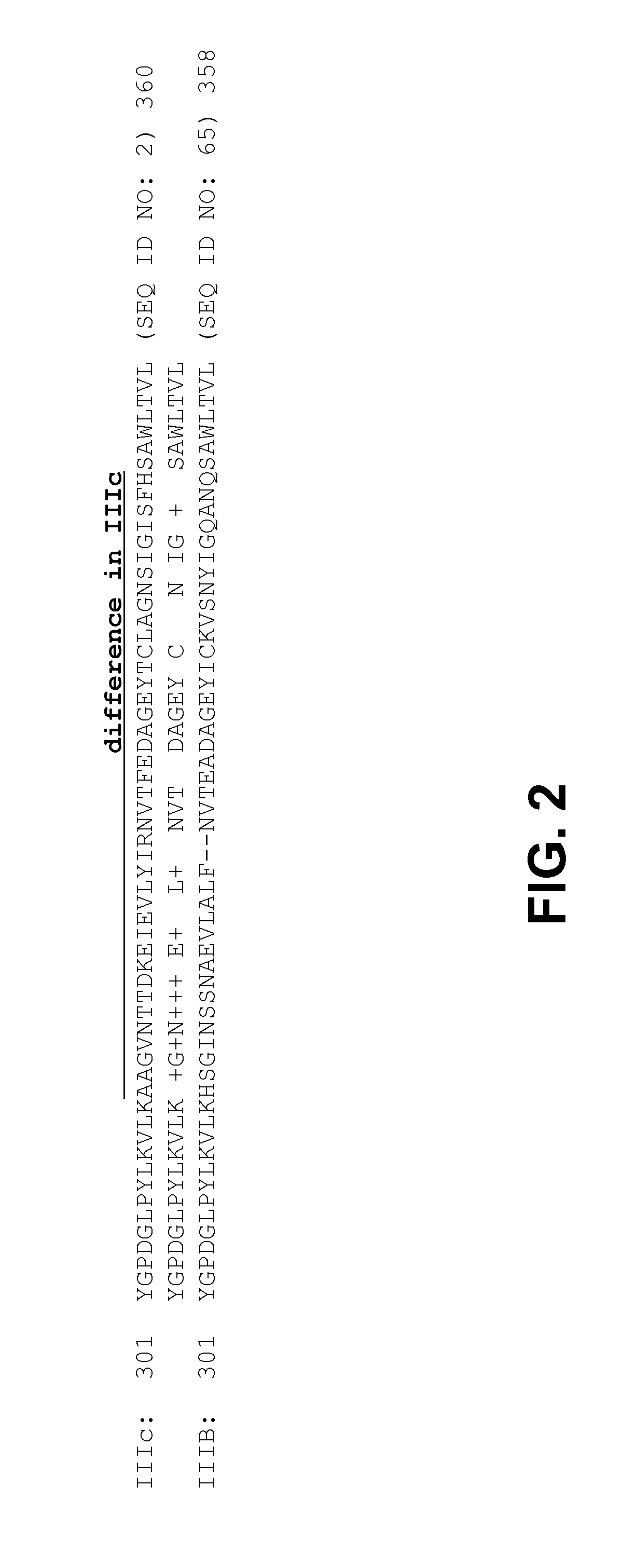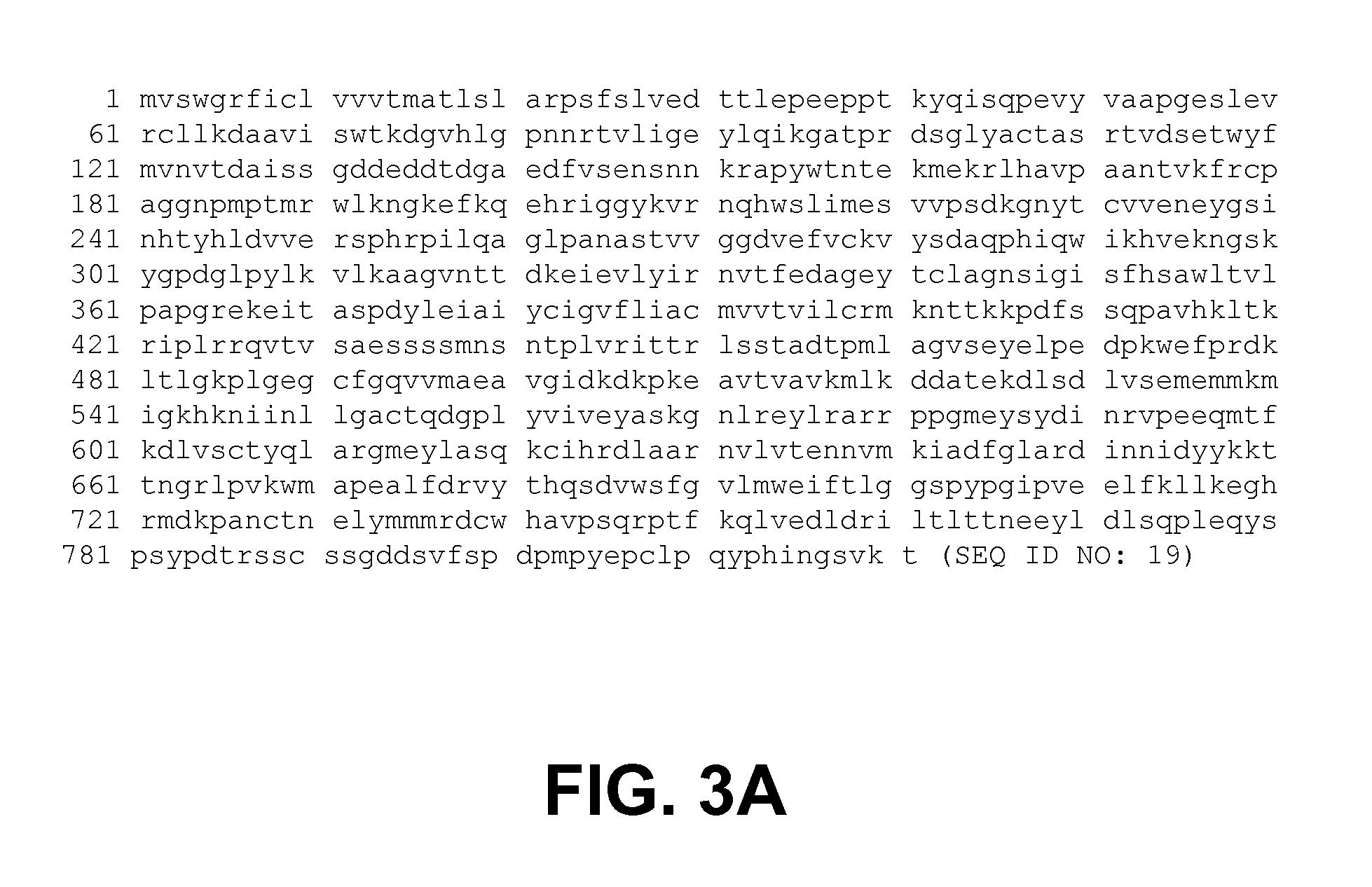Inhibitors of oncogenic isoforms and uses thereof
a technology of oncogenic isoforms and inhibitors, which is applied in the direction of fusion polypeptides, peptide/protein ingredients, depsipeptides, etc., can solve the problems of failure, high failure rate of traditional clinical care, and cancer remains a leading cause of death, so as to enhance the stability of peptides in vivo and enhance the effect of peptide stability
- Summary
- Abstract
- Description
- Claims
- Application Information
AI Technical Summary
Benefits of technology
Problems solved by technology
Method used
Image
Examples
example 1
Isoform Specific Epitopes
Example 1.1
FGFR2: Isoform FGFR2-IIIc (SEQ ID NO: 19)
[0351]This isoform of Fibroblast Growth Factor Receptor 2 (FGFR2) is predominantly expressed in hormone-refractory prostate cancer. Alternative usage of exon III results in different sequence in the Ig-like loop III of the extracellular domain, which is critical for ligand binding. Isoform IIIb is expressed in normal prostate epithelial cells. Malignant prostate cancer cells switch to IIIc isoform, which has high binding affinity to growth factors with high transforming activities, e.g., FGF8b isoform.
[0352]FGFR2-IIIc uses the alternative exon III, which encodes difference sequence than that in isoform FGFR2-IIIb. FGFR2-IIIc isoform contains non-homologous sequence with IIIb isoform in the region of the carboxyl terminal half of the Ig-loop III region, from amino acid position 314 to 353. The isoform structure of FGFR2 is shown in FIG. 1.
[0353]Sequence alignment of IIIc and IIIb isoforms shows the differenc...
example 1.2
FGFR1: Isoform FGFR1L (Deletion of Exon 7 & 8; 105 Amino Acids; Part of Ig-II and Part of Ig-III)
[0357]The isoform structure of Fibroblast Growth Factor Receptor 1 (FGFR1) is shown in FIG. 7. The amino acid (SEQ ID NO: 10) and nucleotide (SEQ ID NO: 9) sequences for the epitope at the junction are shown in FIG. 8.
example 1.3
RON Receptor Tyrosine Kinase: Isoform RONΔ160
[0358]This isoform of Macrophage stimulating 1 receptor (RON) is constitutively active. Skipping of exons 5 and 6 results in an in-frame deletion of 109 amino acids in the extracellular domain.
[0359]The epitope is at the junction between exon 4 and exon 7. The nucleotide (SEQ ID NO: 11) and amino acid (SEQ ID NO: 12) sequences of this epitope are shown in FIG. 9.
PUM
| Property | Measurement | Unit |
|---|---|---|
| temperature | aaaaa | aaaaa |
| pH | aaaaa | aaaaa |
| pH | aaaaa | aaaaa |
Abstract
Description
Claims
Application Information
 Login to View More
Login to View More - R&D
- Intellectual Property
- Life Sciences
- Materials
- Tech Scout
- Unparalleled Data Quality
- Higher Quality Content
- 60% Fewer Hallucinations
Browse by: Latest US Patents, China's latest patents, Technical Efficacy Thesaurus, Application Domain, Technology Topic, Popular Technical Reports.
© 2025 PatSnap. All rights reserved.Legal|Privacy policy|Modern Slavery Act Transparency Statement|Sitemap|About US| Contact US: help@patsnap.com



